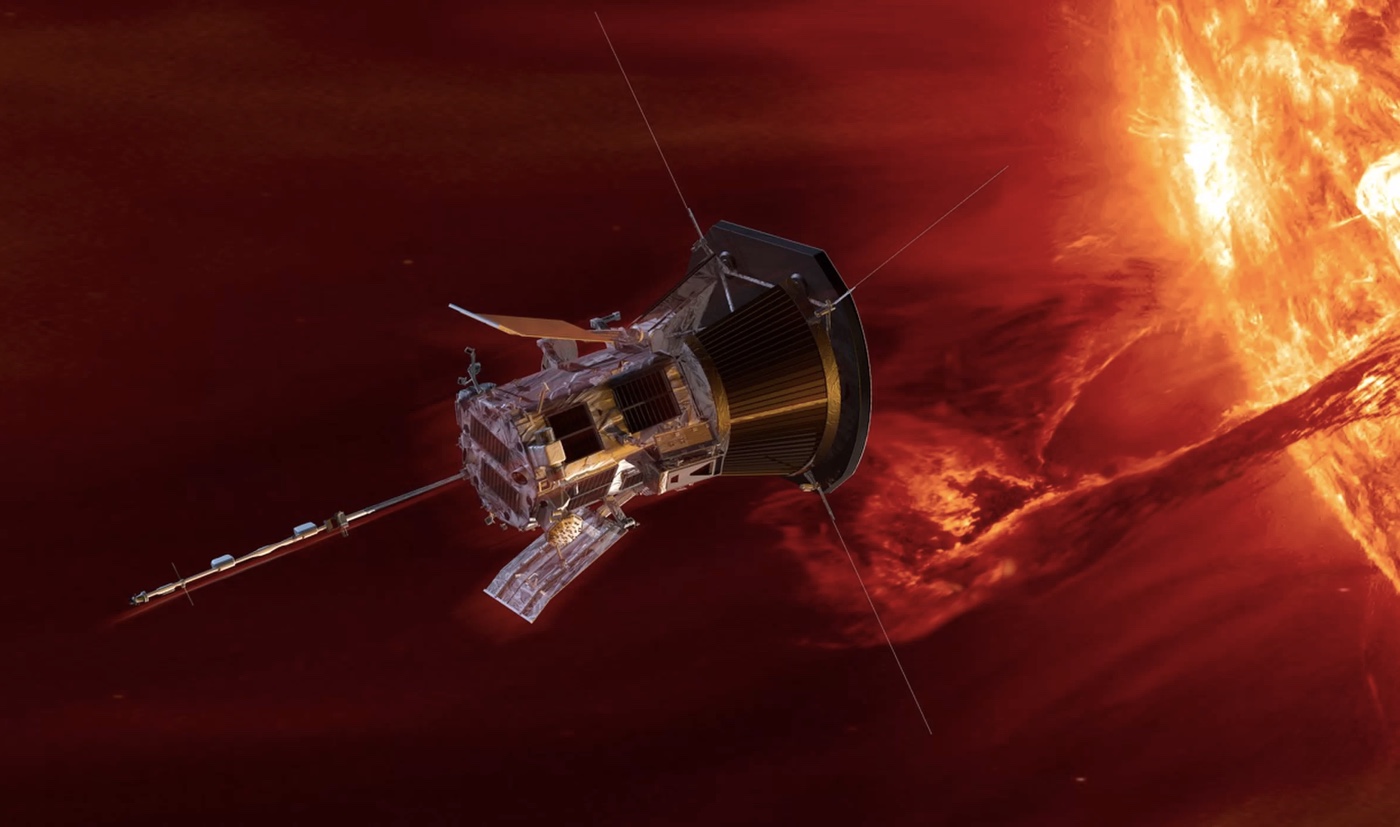NASA's Solar Probe Blasts Off to the Sun
"It was very emotional," Fox told Space.com. "I was speechless and I’m not normally speechless."
The predawn skies lit up like daylight as a United Launch Alliance Delta IV Heavy lifted off at the Cape Canaveral Air Force Station here, carrying the Parker Solar Probe on humanity's first mission to touch the sun. As gorgeous as the launch spectacle was, the real celebration happened just over an hour later. [Launch Photos: Parker Solar Probe Soars to the Sun!]
Cheers erupted in the press site and a collective sigh of relief was breathed as word came through that the spacecraft had separated from the rocket’s third stage — which was built by Northrop Grumman — and beamed backed its first communications.
The Parker Solar Probe had successfully reached space and phoned home.
"The spacecraft is power positive and that’s where we want to be," said Thomas Zurbuchen, associate administrator for NASA's science mission directorate. "Whenever you’re there, you take a breather and then you start working."
A mission to touch the sun
The mission, which has been sought after for 60 years, was first scheduled to launch on July 31, but was pushed back several times due to a variety of technical issues. Less than 2 minutes before its planned liftoff on Saturday (Aug. 11), a helium pressure alarm went off on the Delta IV Heavy, thwarting the day's launch attempt.
But that wasn't the case on Sunday as flames erupted and the rocket roared to life at the opening of the 65-minute window. Which calmed any pre-launch jitters that Fox may have had.
Get the world’s most fascinating discoveries delivered straight to your inbox.
"There was no emotional roller coaster like there was yesterday," Fox said after the launch. "The sky was waiting for us, Venus was waiting for us, and it was just an amazing sight to see." [NASA's Parker Solar Probe Mission in Pictures]
The Delta IV Heavy is slow to rise off the pad and Fox explained that she knew this fact going into the launch, so it wasn’t any cause for concern to see the payload she’s worked on the past eight years slowly and majestically rise off the launch pad. "It took a while for the Delta IV Heavy to clear the pad," Fox said, “but I was prepared for that, so I didn't panic."
The name behind NASA's Parker Solar Probe
The Parker Solar Probe's launch marked a special milestone for one solar scientist: Eugene Parker. After all, the spacecraft is named in his honor. Sixty years ago, it was Parker who first proposed that the sun sent out a stream of solar wind. The Parker Solar Probe is NASA's first ever named after a living person.
"There's nothing like a rocket launch live," said Parker, now 91, who watched the launch from NASA's Kennedy Space Center.
Sitting on the observation deck of NASA's Operations Support Building 2 (OSB-2 for short), Parker watched with his family, Fox, Zurbuchen, and other VIPs as the rocket carrying his namesake ascended towards the sky.
"Now I have to turn from really biting my nails to thinking about the interesting things [to come] that I don’t know yet, which will be made clear, I assume, over the next five, six, or seven years," he said. [The Greatest Missions to the Sun]
Following the launch, Zurbuchen explained how incredible it was to be able to watch the launch with Parker.
"What's so cool about all of this is hanging out with Parker and seeing his emotion," Zurbuchen said, adding that Parker went from being excited about the launch to being excited about the science to come. Zurbuchen assured Parker he would send the famed solar scientist data from the mission as soon as it comes in. (The first bits of sun data are expected in November, mission scientists have said.)
Sunday's flight marked the 129th successful flight for ULA, and the 10th for the Delta IV Heavy rocket.
"We are thrilled with the launch and humbled to have been entrusted with this mission," Tory Bruno, ULA's President and CEO told Space.com following the launch. "Parker Solar Probe will enable groundbreaking research, making space a safer to be."
Over the next few weeks, Parker Solar Probe will run through a series of tests to ensure that its four instrument suites are working properly. The spacecraft will also be prepared for the first of seven planned Venus flybys scheduled for Oct. 2. The next step after that will be to complete its very first solar swoop in November.
Follow us @Spacedotcom, Facebook and Google+. Original article on Space.com.
 Live Science Plus
Live Science Plus









